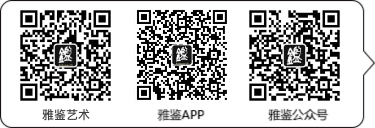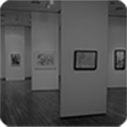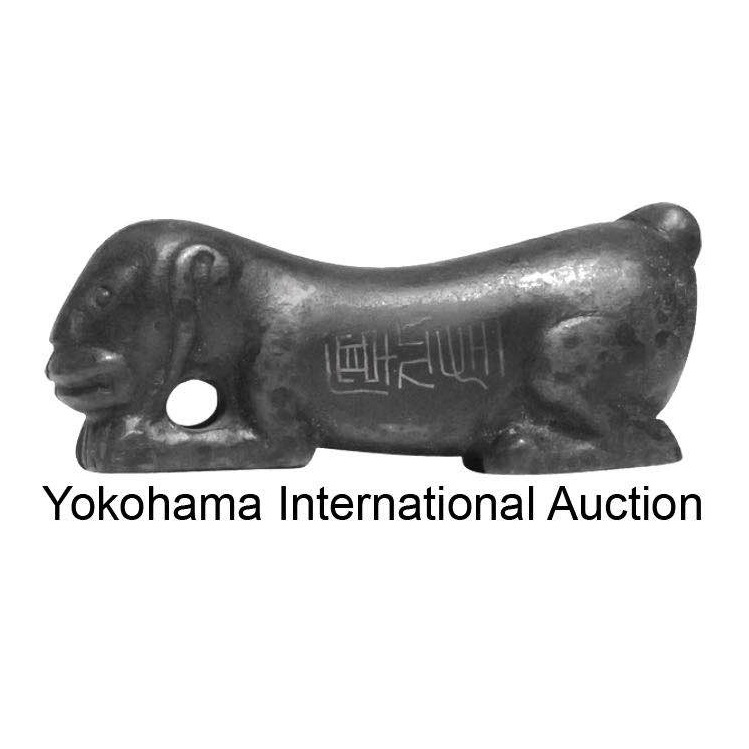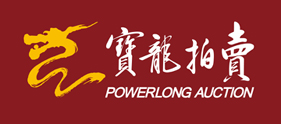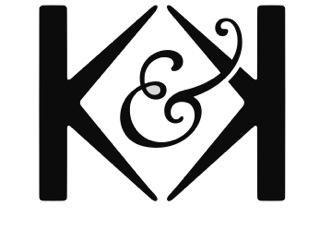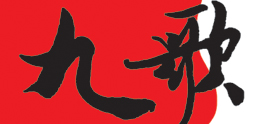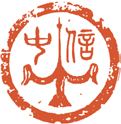| 作品描述 |
北魏 四世紀至六世紀 河南地區 大型石雕坐獅 盧芹齋舊藏
Northern Wei Dynasty (386–535 CE). Majestically sculpted, the robust be...
北魏 四世紀至六世紀 河南地區 大型石雕坐獅 盧芹齋舊藏
Northern Wei Dynasty (386–535 CE). Majestically sculpted, the robust beast sits poised on its haunches atop a rectangular base, its forelegs extended forward and its long tail elegantly curled over its back. The head exudes a fierce intensity, with the mouth agape in a powerful roar beneath piercing eyes, framed by a flowing, curling beard and a swept-back mane. Intricately carved tufts of fur adorn the shoulders and chest, adding to its commanding presence. The stone has a mottled gray-buff color.
Height: 19.5 in (50 cm) Length: 18 in (46 cm) Width: 10 in (25.4 cm)
Provenance: 1. C.T.Loo, prior to 1937, Paris, France. 2. J.T. Tai & Co Inc., New York. 3. Sotheby's New York, 3rd June 1985, lot 25. 4. Sotheby’s New York, September 13, 2016, lot 149 (Realized Price 212,500 USD).
Literature: 1. Daisy Yiyou Wang, "C.T. Loo and the Chinese Art Collection at the Freer, 1915-1951," Arts of Asia, 41/5, September-October 2011, fig. 12. 2. Loo Family Photographs, Freer Gallery of Art and Arthur M. Sackler Gallery Archives.
This magnificent stone beast is part of a distinctive group of carvings from the Northern Wei period, rooted in the Han dynasty tradition of placing pairs of stone animals along the Spirit Road leading to significant tombs. While this elaborate funerary practice was abandoned during the Northern Wei due to economic and social changes, large stone animal sculptures, such as the present example, began to emerge in Buddhist shrines and temples. These sculptures were not only used as architectural supports but also served symbolic and religious functions. For a discussion on Northern Wei animal sculptures, see Ann Paludan, The Chinese Spirit Road (New Haven, 1991, pp. 52–83), where she notes that elements of ancestral worship were incorporated by Buddhist patrons, leading to the construction of many Buddhist shrines dedicated to ancestors.
此尊宏偉的石獸是北魏時期獨特的一類雕刻,其藝術傳統可追溯至漢代。當時,習俗上會在神道兩側安置成對的石雕動物,以守護陵墓並彰顯墓主人的身份與地位。然而,隨著時代變遷,和經濟與社會因素影響,這種奢華的葬制在北魏逐漸被廢止。然而,佛教文化的興盛為大型石雕動物提供了新的功能與意義。本件雕塑正體現了這一變革,石獸逐步出現在佛教寺院、廟宇與石窟之中,不僅作為建築構件與裝飾,亦承載著宗教信仰與神聖庇護的象徵意義。北魏時期,佛教藝術吸收了來自印度犍陀羅的雕塑風格,並與中國本土的藝術傳統相融合,最終形成了具有特色的北魏雕塑風格,影響深遠。
可參考一對相似的石獅,據信來自河南地區龍門石窟,曾為A.W. 巴爾(A.W. Bahr)收藏,並刊載於奧斯瓦爾德・斯瑞恩(Osvald Sirén)所著《中國雕塑:公元五至十四世紀》(Chinese Sculpture from the 5th to the 14th Century),紐約,1970年,圖版114A與114B。
本件雕塑曾為巴黎彤閣(Pagoda Paris)內展出的中國藝術珍品之一(圖1.)。巴黎彤閣曾是C.T. Loo & Cie. 公司的所在地,該公司由傳奇收藏家兼古董商盧芹齋(Ching Tsai Loo,1880-1957)創立(見圖2)。巴黎彤閣至今仍為巴黎第八區的地標,毗鄰蒙索公園(Parc Monceau)。1925年,盧芹齋購得此建築,並在建築師費爾南・布洛赫(Fernand Bloch)的協助下,將其改造成一座中國風格的塔樓,外部塗上深紅色,內部則以來自山西的精美漆板裝飾,以致敬他的故鄉與文化根源。作為20世紀初最具影響力的中國藝術收藏家與古董商之一,盧芹齋的影響力橫跨1910年代至1940年代。他不僅為摩根家族與洛克菲勒家族等名流打造了重要的中國藝術收藏,亦向紐約大都會藝術博物館(Metropolitan Museum of Art, New York)、波士頓美術館(Museum of Fine Arts, Boston)等世界級博物館提供珍貴藝術品。本件宏偉的石獅,正是盧芹齋卓越品味與審美眼光的絕佳體現。 出版: 1.王依悠(Daisy Yiyou Wang),“盧芹齋與弗利爾美術館的中國藝術收藏,1915-1951”,《亞洲藝術》,第41卷第5期,2011年9月至10月,第12圖。2.盧氏家族照片,弗利爾美術館與亞瑟·M·賽克勒美術館檔案館。
|
|---|
 全球艺术品拍卖文献搜索鉴定平台
全球艺术品拍卖文献搜索鉴定平台


